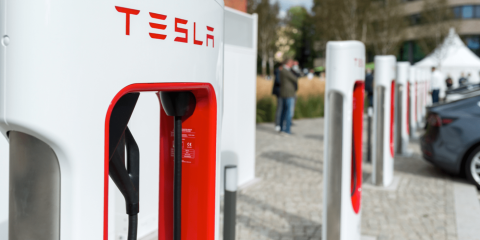Tesla aims to addresses Supercharging challenges with NACS extension cable
Tesla Motors, the trailblazer in the global electric car industry, is taking a proactive step to address the evolving challenges at its Supercharging stations through the development of a NACS extension cable. The move comes as Tesla has opened its Superchargers to non-Tesla EVs. Previously, Superchargers in North America were designed exclusively for Tesla EVs, all of which featured charge ports at the same location, i.e., at the rear of the driver’s side. However, with the opening of the Superchargers to other EV brands, it becomes a logistic challenge to charge EVs with varying charging port locations, particularly at V3 Supercharger stations.
With Ford EVs gaining access to the Supercharger network, Tesla suggests that these EVs should be parked halfway onto the next stall to facilitate charging. This suggestion specifies left-side parking, while right-side parking is discouraged, highlighting the need for more flexible solutions.
Acknowledging the issue, Tesla stated, “Most Supercharger cables at NACS Supercharger sites should be able to reach your EV charge port; however, in some cases, you might have to park over the line to charge comfortably.”
To address compatibility issues with different charge port locations, Tesla has developed a new V4 Supercharger by featuring a substantially longer cable. It facilitates easier connection for non-Tesla EVs. The company is also actively working on a NACS-to-NACS extension cable. Although the exact release date for the new solution remains under wraps, the cable is expected to be available for purchase sometime in the future.
While the NACS extension cable offers an interim solution until V4 Superchargers become available more widely, it raises questions about potential limitations in charging power, particularly if liquid cooling cannot be extended into the device. In addition, the availability of the cable for purchase implies that EV owners with non-standard charge port locations may need to invest in this accessory.
To mitigate potential issues, there could be merit in implementing a locking mechanism for the extension cable at Tesla’s Supercharger stations, which are accessible through a dedicated app. This approach would ensure efficient use of the extension cable by owners of non-Tesla EVs and contribute to a smoother charging experience for all users. As the electric car pioneer continues to navigate the complexities of charging infrastructure compatibility, the NACS extension cable emerges as a practical solution to promote inclusivity in the fast-growing EV ecosystem.
